By David Alan Johnson
“One large, two small vessels, one six miles from Savo off northern beach, Guadalcanal. Will investigate closer.” This message, from Lieutenant John A. Thomas, pilot of the cruiser USS San Francisco’s Vought OS2U Kingfisher scout plane, could not have come at a better time. Aboard his flagship, Admiral Norman Scott received the news with relief—his Task Force 64.2 had been looking for the approaching Japanese force for the past several hours. Four Kingfishers were supposed to have been launched to find the enemy, but the cruiser Salt Lake City’s caught fire and crashed, and the cruiser Helena’s was not launched at all. Only the cruisers Boise and San Francisco managed to get their spotting planes into the air, and everyone aboard Admiral Scott’s task force waited for word from one of them. At 10:50 pm, on October 11, 1942, contact was finally made, and the Battle of Cape Esperance was about to begin.
Maneuvers in the Dark
What San Francisco’s scout plane had found was the Japanese Reinforcement Group, which was made up of the seaplane carriers Chitose and Nisshin and their escorting destroyers. These had left the Shortland Islands at eight o’clock that morning. Commanded by Rear Admiral Takaji Joshima, the seaplane carriers were on their way to the embattled island of Guadalcanal in the Solomons, which had been contested by Japanese and American troops since U.S. Marines had landed there on August 7 and seized its vital airstrip. The Japanese ships carried two field guns, four howitzers, six landing craft, ammunition, medical supplies, and 728 troops. Guarding their flanks were the fast and nimble destroyers Akizuki, Asagumo, Natsugumo, Yamagumo, Murakumo, and Shirayuki.
Another Japanese force was also on its way, although Admiral Scott did not know it at the time. The Bombardment Group, made up of the heavy cruisers Aoba, Kinugasa, and Furutaka and destroyers Hatsuyuki and Fubuki, was heading for Guadalcanal at 30 knots under the command of Rear Admiral Aritomo Goto. Because of its speed, Admiral Goto’s fast cruisers and destroyers would reach Guadalcanal.
Admiral Scott’s ships had already formed up in a battle line. Three destroyers, Farenholt, Duncan, and Laffey, led the way. The cruisers San Francisco, Boise, Salt Lake City, and Helena made up the center of the formation, and bringing up the rear were the destroyers Buchanan and McCalla. Each ship was separated by 500 to 700 yards. Because the moon had already set, the night was totally black without any ambient light. To the young officers of the deck aboard the cruisers and destroyers, the resulting lack of visibility made the distance between ships seem much shorter.
At 11:32 pm, Admiral Scott ordered his column to turn 180 degrees to course 230. He wanted to cover the passage between Savo Island and Cape Esperance and to be in position to intercept the approaching enemy force.
Because of the blackness of the tropical night, the maneuver did not go exactly as planned. The three leading destroyers were thrown out of formation during the turn. They made the 180-degree adjustment, but they now held a parallel course with the rest of the column, on the same heading but not in line. This would lead to confusion during the coming battle.
Rehearsing for Nighttime Action
Rear Admiral Scott was a 53-year-old career naval officer who had also served in World War I. His ship had been torpedoed by a German U-boat in 1917. He had been stationed in Washington, D.C., during the months after Pearl Harbor but was given sea duty in June 1942. Scott had been at sea off Guadalcanal on August 9, during the Battle of Savo Island, but he had not been involved in the fighting. Because of the catastrophe suffered by the Allies at Savo, in which four cruisers were sunk by the Japanese, Scott saw to it that his gunners had training in night fighting—which is exactly what the Americans had lacked in the Guadalcanal campaign so far. (Get more in-depth stories of the Guadalcanal campaign and the men who defined its events inside WWII History magazine.)
For three weeks, Admiral Scott drilled his task force in preparation for a night action. He kept his ships at battle stations from dusk until dawn, which simulated night battle conditions and allowed crews to acclimate themselves to a nighttime environment at sea. Scott planned to be fully prepared for the next encounter with the Japanese fleet, which he knew would not be long in coming.
Confusion on Both Sides
Helena first made radar contact with the enemy at 11:25 pm. The target was 27,000 yards away, bearing 315 degrees. Helena was equipped with the new SG radar, which allowed its operators to detect the enemy at a longer range than the older SC model and also allowed for more accurate tracking of the enemy. But San Francisco was equipped with the older SC radar and did not find Goto’s ships as readily. In fact, San Francisco’s radar did not detect any echo. The TBS (Talk Between Ships) shortly brought a message from Boise, which was also equipped with SG radar. Boise reported five bogeys at a bearing of 65 degrees. Again, Admiral Scott had to take another ship’s word for it; San Francisco’s radar was not detecting anything.
What Boise had picked up were the ships of Admiral Goto’s Bombardment Group, the heavy cruisers Aoba, Kinugasa, and Furutaka, and the destroyers Hatsuyuki and Fubuki. But her report only added to the confusion. In naval lingo, “bogeys” refers to unidentified aircraft, not enemy ships. And the bearing of 65 degrees did not specify whether this was a relative bearing or a true bearing. It was a vital difference: 65 degrees relative to Boise and the rest of the American formation would indicate that this was the same contact Helena had picked up. But 65 degrees true would mean that this was a different contact altogether. Admiral Scott, unable to draw any conclusions from San Francisco’s radar, did not know what to make of Boise’s contact.
In Scott’s mind, there was also the possibility that either Helena’s contact or Boise’s, or possibly both, might be the destroyers Duncan, Farenholt, and Laffey, which had become detached from the column during the 180-degree turn. Scott called to Captain Robert G. Tobin aboard Farenholt, “Are you taking station ahead?” Tobin answered, “Affirmative. Coming up on your starboard side.” Actually, only Farenholt and Laffey were on a parallel course with the main column. Duncan headed off on her own, charging straight toward Goto’s cruisers and destroyers.
It would have come as small consolation to Scott if he had known that Goto was just as confused. He had no radar at all and had to rely upon the eyesight of his lookouts. At 11:43, lookouts aboard Aoba detected the silhouettes of three ships almost dead ahead, about 11,000 yards away. Goto was not concerned. He made the assumption that the ships were part of Admiral Joshima’s Reinforcement Group.
“Roger”: The Battle of Cape Esperance Begins with Confusion
At this stage of the Guadalcanal campaign, this was a fair assumption. The Americans were not yet very adept when it came to fighting at night, as Admiral Goto was fully aware. After their resounding defeat at the Battle of Savo Island, which took place on the night of August 9, 1942, it was widely rumored that the Americans were afraid to come out after dark.
“The Americans ruled the waves from sunup to sundown,” naval historian Samuel Eliot Morison noted. “But when the tropical twilight performed its quick fadeout and the pall of night fell on Ironbottom Sound, Allied ships cleared out like frightened children from a graveyard.”
Goto had no reason to suspect that the ships ahead of his column were American. He reduced speed to 26 knots and ordered the day’s recognition signal to be flashed at the three silhouettes.
When the range had diminished to about 7,500 yards, the lookouts called out that the ships were enemy. Action stations were sounded aboard Aoba, but Goto was not convinced that the ships were American. He ordered the recognition signal to be flashed again.
Scott was just as confused. Even with radar, he still did not know whether Boise and Helena had made contact with enemy ships or with his own destroyers. Helena’s gunners had no doubts at all. When the range was down to 5,000 yards, lookouts reported, “Ships visible to the naked eye.” Helena’s captain, Gilbert C. Hoover, broadcast the signal, “Interrogatory Roger” to San Francisco via TBS.
Scott replied, “Roger!” meaning “Message received.” Captain Hoover thought it meant “Open fire,” or at least this is what he said. At 11:46, Helena’s main battery of six-inch guns and secondary five-inchers began shooting at Goto’s column. The Battle of Cape Esperance was officially underway.
Scott was absolutely astonished. When Helena opened up, the other ships followed. The entire column seemed to erupt in explosions. As the warships began shooting all at once, the reports and muzzle flashes sometimes came simultaneously. The concussion from San Francisco’s gunfire literally took the admiral’s breath away and nearly deafened him.
Aoba was hit by several shells while her crew was busy flashing the second recognition signal. Six-inch shells from Helena and Boise, along with eight-inch shells from San Francisco and Salt Lake City and five-inch shells from Laffey, all smashed into the Japanese heavy cruiser. Two of Aoba’s eight-inch turrets were knocked out as well as its fire control director, and communications were disrupted throughout the ship. Large-caliber shells hit the flag bridge without exploding, but their impact killed several officers and men. Goto was among the mortally wounded.
Scott Crosses the T… Accidentally
Scott did not know it, but when he made his 180-degree turn, he had inadvertently executed the classic naval maneuver of crossing the T. He had brought his own ships across the bows of the approaching Japanese column, which allowed his cruisers and destroyers to bring the maximum number of guns to bear, while the enemy could only respond with its forward-firing guns. He had also reversed the position of the Allied ships at the Battle of Savo Island two months earlier. He had caught the enemy unawares, hitting Goto’s ships hard before the Japanese admiral knew that he was in a battle.
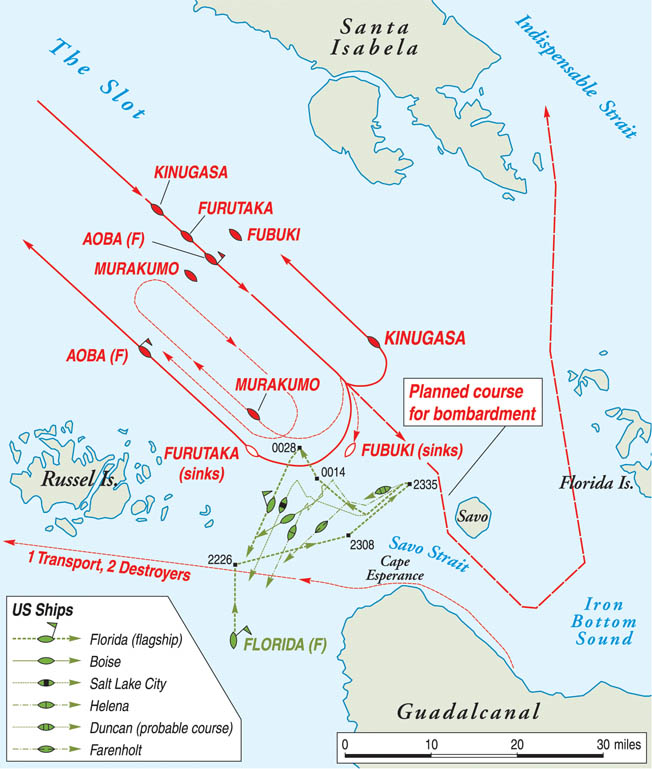
Scott, however, still was not certain that his ships were firing at the enemy. At 11:47, he ordered, “Cease firing our ships.” Not all the captains heard the order—or else they decided to ignore it. Firing slackened, but did not entirely stop.
Via TBS, Scott asked Captain Tobin aboard Laffey, “How are you?” The question came as something of a surprise; Tobin responded that he was fine.
“Are we shooting at you?” Scott persisted. It was another surprise question. Tobin answered, “I do not know who you were firing at.”
Scott did not know, either. He asked Tobin’s destroyers to flash the recognition signal for the day: lights green over green over white, lined up vertically. All of the destroyers complied; Scott saw the lights glimmer briefly to starboard. Finally satisfied that he was not firing at his own ships, Scott ordered, “Resume firing!” at 11:51.
First Loss of the Night
During the four-minute interval, the Japanese also finally came to the conclusion that they were facing enemy ships. Japanese gunners returned an ineffective fire. Aoba turned right 180 degrees and increased speed, but the cruiser was hit continually. Her foremast crashed to the deck, and several fires broke out. After about 40 hits, only one turret remained in action. Goto’s senior staff officer, Captain Kikunori Kijima, was informed that Goto had been badly wounded and that he was now in charge of the Bombardment Group. Captain Kijima already had more than enough problems without worrying about the rest of the group.
Communicating with the other ships in the now scattered column was all but impossible because most of Aoba’s communications equipment had been put out of action. It would not have been feasible to direct the movement of even one other ship from the damaged cruiser. At 11:50, Aoba began to make smoke and turned to the northwest, which was the most direct route of escape. Aoba’s captain hoped to get clear of the American column as quickly as possible, far enough to allow reestablishment of communications with the other Japanese ships. At this stage of the battle, staying close to Scott’s force served no purpose at all.
The ship in line behind Aoba was the heavy cruiser Furutaka. Her commander, Captain Araki Tsutau, grasped the fact that his column had been surprised by an American force as soon as Scott’s ships began shooting. His first impulse was to turn left, which was the quickest route away from the American gunfire. When Aoba turned right, Tsutau decided to follow Goto’s flagship. This was an ill-advised decision. With Aoba retreating behind a smoke screen, gunners aboard Helena, San Francisco, and the other American ships shifted their fire to Furutaka, now the most convenient target.
Furutaka began taking hits at 11:49. About a minute later, a shell landed among the cruiser’s torpedo tubes. The resulting explosion and fire became a focal point for American gunners, who concentrated their fire. Both Boise and Helena had five three-gun turrets mounting six-inch cannon and capable of firing 30 rounds per minute. Along with the other ships in the column, these rapid-firing cruisers put round after round into Furutaka. She was hit over 90 times, taking a number of hits below the waterline. Somehow she managed not only to stay afloat but also to keep up enough power to maintain headway.
While this was going on, gunners and lookouts aboard San Francisco spotted an unidentified ship about three-quarters of a mile away. The ship flashed strange recognition signals—a combination of red and white lights—and also signaled some mysterious words or characters at the American column. San Francisco turned her searchlight on the unknown ship, lighting up the latticework foremast and white-banded second funnel of a Japanese destroyer.
The destroyer Fubuki had been caught completely unawares. Flooded by San Francisco’s light, the ship came under the guns of Scott’s entire column. After being hit numerous times, she stopped dead in the water and blew up. Fubuki was the first ship to sink that night.
The American Column Takes Fire
The battle was not entirely one-sided. The destroyer Duncan, which had charged toward the enemy alone after becoming detached from her column, was the first American ship to be hit by enemy fire. She had just launched torpedoes at Furutaka and was firing her guns at the Japanese when shells knocked out her fire control director and mortally wounded the torpedo officer. The chief torpedoman took over and launched a second torpedo without benefit of the main control. Observers thought they saw the Japanese cruiser “crumple in the middle, then roll over and disappear.” This was either an illusion or wishful thinking; Furutaka was still very much afloat and moving forward under her own power.
Both Japanese and American shells crashed into Duncan. The destroyer’s forward funnel was blown over, and the same shell started a fire in No. 2 ammunition handling room. Because he realized that his ship was in as much danger from friendly fire as from the enemy, Duncan’s captain, Lt. Cmdr. Edmund B. Taylor, ordered the recognition lights turned on. If anything, the lights only served as an aiming point. Four shells from the direction of Scott’s column immediately put out all of the ship’s power and jammed the rudder full left. With her rudder stuck, Duncan began spiraling out of the battle area.
Farenholt was also in an awkward position between the enemy and the American column. At about the same time that Duncan was going through her ordeal, shells struck Farenholt’s rigging. Jagged shrapnel fragments sprayed the decks, killing several of the crew. One of the fragments hit a torpedo tube that was just being swung out for firing. The shrapnel went right through the tube and penetrated the torpedo’s air flask, which blew it partly out of its mounting and started its electric motor. The motor continued running inside the tube, but the torpedo did not explode and no further damage was done.
A second shell went through Farenholt’s port side just above the waterline, destroying communications wiring as well as the ship’s fire control circuits. A third shell damaged the fire room. Scalding steam was released, which drove the crew up on deck. Both hull hits came on the port side and were listed as “apparently 6-inch,” which makes it fairly certain that Farenholt was also the victim of American fire. The destroyer now had a five-degree list. Her captain, Lt. Cmdr. Eugene T. Seaward, took her across the bow of San Francisco and out of the battle.
“A Game of Blind Man’s Bluff”
Scott turned his column to the northwest at 11:55, bringing it parallel with the Japanese. All four cruisers, Boise, Helena, San Francisco, and Salt Lake City, tracked targets and fired round after round, but by this time it was impossible to tell which Japanese ships were being fired at. The two rear destroyers, Buchanan and McCalla, also kept up a steady rate of fire.
Lieutenant Commander Ralph E. Wilson, Buchanan’s captain, reported that he “shot the works,” launching five torpedoes and letting loose with a nonstop barrage from his five-inch main battery. On board McCalla, Lt. Cmdr. William G. Cooper could see Aoba and Furutaka burning and was surprised that the guns of both ships were still trained fore and aft—further evidence that Goto had been taken completely by surprise.
Scott’s column was no longer in any sort of formation at this stage of the battle; it had “fallen into very ragged shape,” according to an American writer. Scott was still not certain of the strength of the enemy force, but he knew that he had hit it hard and that he was on the verge of victory. In the dead of night with no moon, determining the enemy strength was no simple task, although the SG radar aboard Boise and Helena did help.
“Despite radar,” the same writer pointed out, “the battle was still a game of blind man’s bluff.”
Precisely at midnight, Scott ordered all ships to cease firing. His column was loosely strung together, and it was dangerously difficult to tell friend from foe. Again, some captains ignored the order and kept shooting. All ships were also called upon to flash their recognition lights and form up into a column. Every ship except the damaged destroyers Duncan and Farenholt complied.
Boise was the last ship to stop firing. Her radar gave her gunners a target that was also visible to everyone topside because of a fire. When this ship disappeared from view and from radar, Boise finally obeyed Admiral Scott’s order and gave her gunners a rest. Captain Edward Moran could see San Francisco’s recognition lights ahead and brought Boise in line with the flagship.
Boise Takes on Water
Scott was determined to go after the enemy, and the Japanese force was ready to return the compliment by giving him all the fight he wanted. At 12:06 am, both Boise and Helena received an urgent warning—“Torpedoes approaching.”
Captain Moran ordered hard right rudder, and the cruiser turned sharply to run parallel with the two torpedoes. One just cleared the port bow; the second came up on the starboard side and missed the stern by about 90 feet. Everyone on board was relieved when Boise straightened her course and rejoined the column.
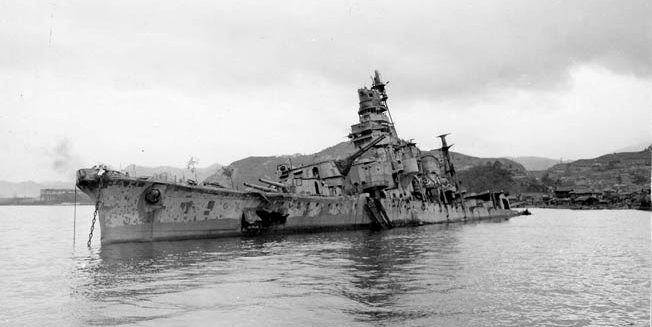
Both torpedoes had been fired by the cruiser Kinugasa. Three minutes after Boise and Helena received the torpedo warning, Kinugasa began shooting at the American cruisers from about 8,000 yards. San Francisco was her first target. A Japanese salvo landed in the flagship’s wake, giving her crew a nasty surprise. After one salvo, Kinugasa shifted targets to Boise. Captain Moran grudgingly admitted that the cruiser was shooting beautifully.
When Kinugasa changed targets, Boise had her searchlight trained on a target on her starboard beam. The light offered an excellent aiming point for the enemy gunners. For the next three minutes, Boise was given a frightening demonstration of Japanese gunnery. An eight-inch shell hit her forward turret, jamming it and causing it to be abandoned. Another shell penetrated the hull nine feet below the waterline and exploded in the forward six-inch magazine. Handling and magazine crews were wiped out by the blast.
Moran gave the order to flood the forward magazines, but the men at the flood control panel had been killed. It looked as though Boise might blow up. But luck was with Boise and her crew. The shell that had caused the explosion also let tons of seawater into the forward area, flooding the magazines. Even though the men at the flooding panel were dead, the shell that killed them did what they were no longer able to do.
To escape any further damage, Moran turned Boise out of the column, bringing her sharply to port and increasing her speed to 30 knots. The next salvo landed short by 50 to 100 yards, where the cruiser would have been if she had not turned. As the cruiser left the fight, her after six-inch turrets continued to fire at the enemy for another two minutes.
“The Show May Not be Over”
Lieutenant John A. Thomas and his observer were still in the air. The two men in San Francisco’s Kingfisher scout plane were able to watch the battle from a unique position circling several hundred feet above it. They saw the American column cross the T, watched the gunfire of the American ships take its toll on the enemy, and also saw the Japanese force begin to shoot back as tall splashes from Kinugasa’s guns landed in San Francisco’s wake. They saw Boise’s forecastle flare up in a massive orange explosion. Thomas reported his position to Scott aboard San Francisco at 12:12 and continued to circle above the battle.
After Boise left the column, San Francisco began shooting at Kinugasa with radar-controlled gunfire. Salt Lake City also fired at the Japanese cruiser, hitting her once while being hit twice herself by Japanese gunners. One of the shells started a fire that killed several men and did considerable damage to the cruiser’s electrical circuits.
Scott ordered a change of course to 330 degrees. His purpose was to press the enemy, but the night action had slackened. The admiral was not yet ready to break off action, but the Japanese were doing their best to get away from the battle area. Just after altering course, he told his captains, “Stand by for further action. The show may not be over.”
But it was.
By 12:20, Aoba, Kinugasa, and Hatsuyuki were steaming off to the northwest, trying to put as much distance between themselves and the American force as possible. Furutaka was slowed by the damage she had received and lagged behind. The destroyer Fubuki had already gone down.
Taking Count of the Toll
Of the American ships, Boise had suffered the most damage. Her forecastle fire had been put out by 12:19, but two turrets still burned. These fires were also put out, but the job was made much more difficult because of the bodies that blocked the hatches of one of the turrets. The cruiser’s damage control teams kept working and managed to overcome every problem they encountered. By 2:40 am, all fires were out, and the shell holes in her hull were plugged. Boise had lost 107 killed and 29 wounded, but she rejoined Scott’s column at 3:05 at a speed of 20 knots.
Aboard Aoba, Captain Kikunori Kijima told the dying Goto that he could go to the next world “with an easy mind” because his task force had sunk two American cruisers. This might have been an attempt to lift the spirits of a dying man, or might just have been wishful thinking. But what Captain Kijima said was anything but the truth.
It is possible that he thought Boise had sunk and that he mistook Farenholt for a cruiser. Actually, although she was badly damaged and taking water, Farenholt did not sink. The crew managed to shift enough ballast to create a nine-degree list to starboard, which brought the shell holes below the waterline on the port side clear of the sea. Temporarily safe from flooding, Farenholt set a course to the southeast at a speed of 20 knots. Her escort, the newly arrived destroyer Aaron Ward, escorted her safely back to base at Noumea.
Duncan did not fare nearly as well. Fires proved impossible to put out, burning steadily enough to set off the 20mm ammunition in the gun mounts. Her captain, Lt. Cmdr. Taylor, gave the order to abandon ship. From life rafts, he and the other survivors watched as their ship moved steadily away from them, still on fire with ammunition exploding.
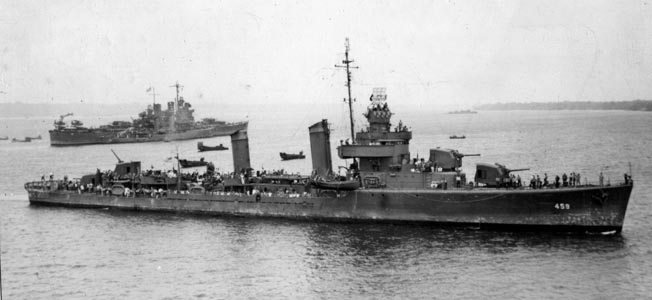
A small party remained aboard, and the senior officer there, Lieutenant Herbert R. Kabat, thought of beaching Duncan on Savo Island to keep her from sinking. When the fires began to die down, he changed his mind and decided to try to save the destroyer by putting out the fires. However, flames prevented anyone from entering the after fire room, which meant that there could be no steam, no power, and no pumps to make the ship dry. Duncan eventually slowed to a stop. At 2 am, the destroyer was abandoned for the final time. The survivors—195 officers and men, watched their ship burning in the darkness. Forty-eight seamen had died.
A salvage team from McCalla later boarded Duncan and made another effort to save her but had no more success than Duncan’s own crew. Shortly before noon, the destroyer sank six miles north of Savo Island.
McCalla’s crewmen found themselves playing the unexpected role of rescuer. But the men they rescued were survivors of Fubuki, who did not want to be rescued. Lines were thrown to the Japanese sailors, but the men would not grab them and refused to surrender. McCalla’s crew grabbed hold of three of the Japanese and forcibly hauled them aboard. The others preferred drowning or sharks to being saved by the enemy.
Furutaka also went down, and the destroyer Hatsuyuki rescued most of her survivors. She had been hit many times by gunfire from more than one American cruiser and had also been struck by one or more torpedoes from either Duncan or Buchanan. Furutaka sank at 2:28 am, 22 miles north of Savo Island.
Aoba did not sink. Even though she had been hit more than 40 times, she retired up New Georgia Sound under her own power. She made it to the Shortlands, arriving at about 10 am, and was sent home for major repairs.
Air Power Overwhelms
While Goto’s Bombardment Group was being handled roughly by Scott’s cruisers and destroyers, Joshima’s Reinforcement Group was landing its troops, supplies, and 150mm howitzers on Guadalcanal, near Kokumbona. By 2:30, the Reinforcement Group had done its job and was steaming away from Guadalcanal. Joshima had been informed of the Battle of Cape Esperance and detached destroyers Shirayuki and Murakumo to rescue survivors from Goto’s task force.
Between them, the two destroyers saved 400 Japanese from the sea. But 11 Douglas SBD Dauntless dive-bombers from Henderson Field on Guadalcanal found them at 8:20 am before they could get clear of the area. No direct hits were scored, but a near miss ruptured a fuel tank aboard Murakumo. A second, much larger, air strike soon followed. This group of aircraft consisted of 13 SBDs, six Grumman TBF Avenger torpedo bombers, and 14 Grumman F4F Wildcat fighters. The SBDs caused minor damage from near misses, but one of the TBFs hit Murakumo with a torpedo, leaving her without power.
As soon as he heard about the air strike and its results, Joshima sent two other destroyers, Asagumo and Natsugumo, to rescue the rescuers. Another American air strike arrived at about 3:45 pm and included 11 SBDs and TBFs along with eight Wildcats and Bell P-39 Airacobra fighters. These planes found four destroyers instead of two. Natsugumo suffered one direct hit and eight near misses, which left her dead in the water along with Murakumo. The flooding caused by the near misses rapidly filled the engine rooms and other compartments. At 4:27, Natsugumo sank with 16 crew members and her captain still aboard. Asagumo took off survivors.
Murakumo was a stationary target for the SBDs and also suffered a direct hit. Shirayuki removed everyone from the badly damaged ship and scuttled her sister destroyer with a single Long Lance torpedo. Asagumo and Shirayuki, both jammed with survivors, set sail for their anchorage in the Shortland Islands. The remainder of both the Reinforcement and Bombardment Groups had already left for the Shortlands hours before.
“30-MINUTE COMBAT”
Most of Task Group 64.2 had been on its way to Espiritu Santo by daylight. Repairs were already started aboard Salt Lake City and Boise. Farenholt was making good speed and indicated that she did not require assistance. Thomas, who had witnessed the battle from San Francisco’s Kingfisher aircraft, had landed safely on the small island of Tulagi.
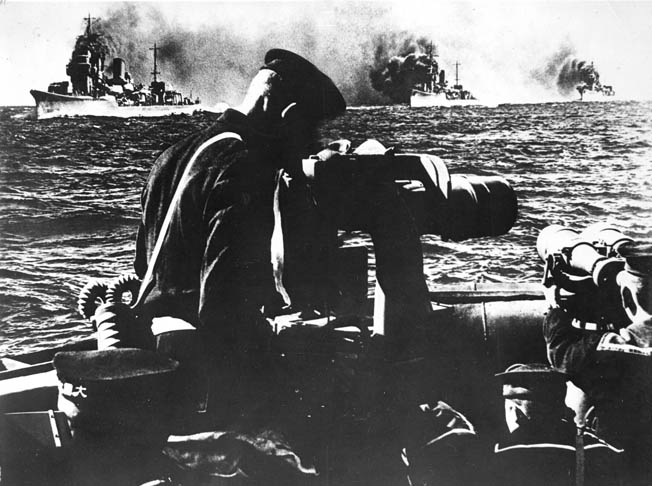
The Japanese lost a heavy cruiser and three destroyers in the fighting of October 12, 1942, and more than 450 killed. At first, Eighth Fleet Headquarters at Rabaul did not believe the losses, but Japanese senior commanders finally had no choice when Furutaka, Fubuki, Natsugumo, and Murakumo did not return. Captain Kijima, Admiral Goto’s chief of staff and successor to the command of the Bombardment Group, claimed that his force had sunk two American cruisers and a destroyer in the night engagement. He was immediately relieved of command.
Admiral Tamaki Ugaki, chief of staff of the Combined Fleet, blamed overall carelessness as the prime culprit for Goto’s undoing, however, and did not use Captain Kijima as a scapegoat. He certainly had a point. If Goto had not ignored his lookouts when they warned of enemy ships, his force would have been much better prepared for the coming action.
Scott was killed during the Naval Battle of Guadalcanal on November 13, and, according to Morison, he “became the hero of the South Pacific during the short month that remained in his valiant life.” His subordinates reported that they had combined to sink three Japanese cruisers and four destroyers. Scott was inclined to regard this evaluation as wishful thinking.
Although the Americans had inflicted much greater losses on the Japanese, the Battle of Cape Esperance cost them one destroyer, Duncan, sunk; another, Farenholt, damaged; and two cruisers, Boise and Salt Lake City, damaged. Also, Admiral Joshima’s group had landed its men and equipment on Guadalcanal.
The headline of the October 13, 1942, edition of The New York Times announced, “30-MINUTE COMBAT; Our Ships sink Cruiser, Four Destroyers and Transport At Night. US DESTROYER IS LOST.” The story went on to report, “In a midnight battle with Japanese warships in the Solomon Islands, United States warships sank one Japanese heavy cruiser, four destroyers and a transport, and repulsed an enemy attempt to land more troops on Guadalcanal, the Navy Department announced tonight.”
The story was more accurate than the version given by Scott’s subordinates but was also largely wishful thinking.
A Victory for Morale
After the Battle of Cape Esperance, the sailors of the U.S. Navy now knew that they were capable not only of fighting the enemy at night but also of giving the Japanese a good drubbing. The Tokyo Express, as the Japanese reinforcement runs were nicknamed, was no longer completely safe in the darkness. The U.S. confidence that had been so badly damaged at Savo Island had now been restored.
The Americans also gained valuable experience in night tactics and in the use of radar. Still, Cape Esperance showed that a much more thorough knowledge of radar was needed, which led to new training courses in both radar and in night combat.
Luck, preparation, and technology had combined to give the Americans a much needed victory. Morison summed up the outcome of the fighting: “At the very depth of this winter of our discontent came the battle off Cape Esperance—which, if far short of glorious summer, gave the tired Americans a heartening victory and the proud Japanese a sound spanking.”
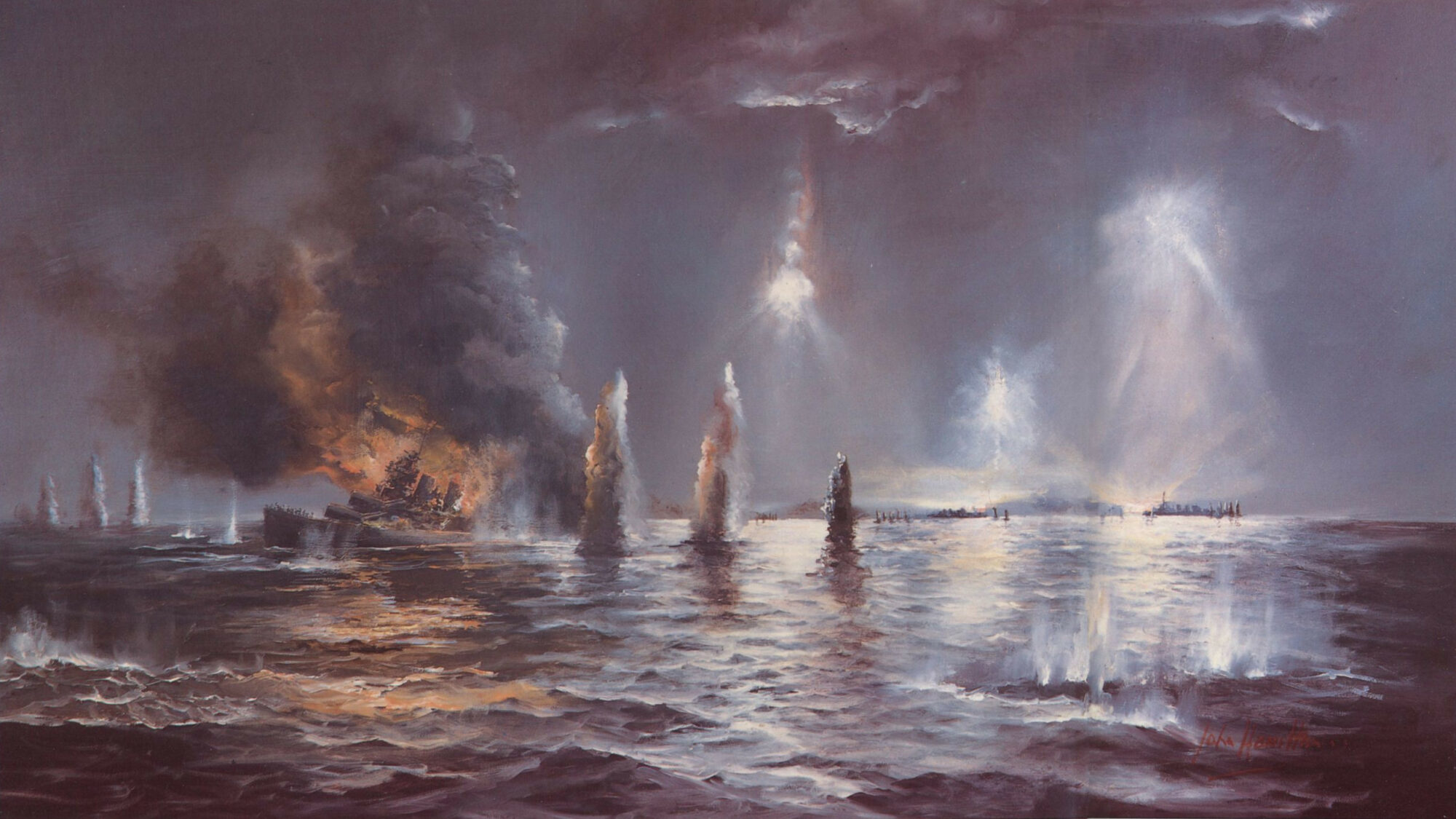
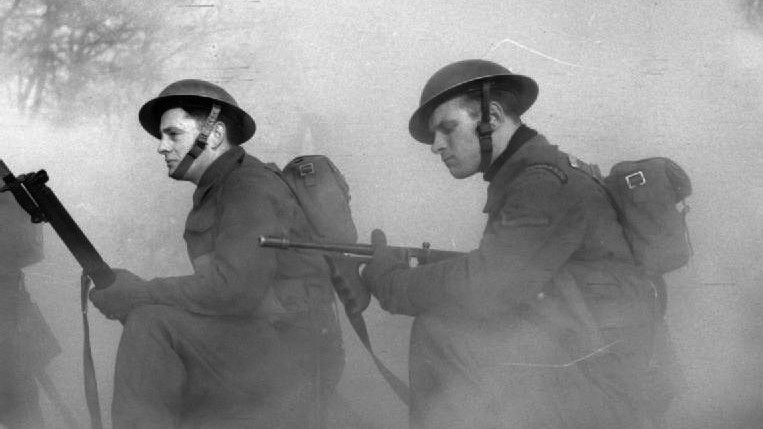
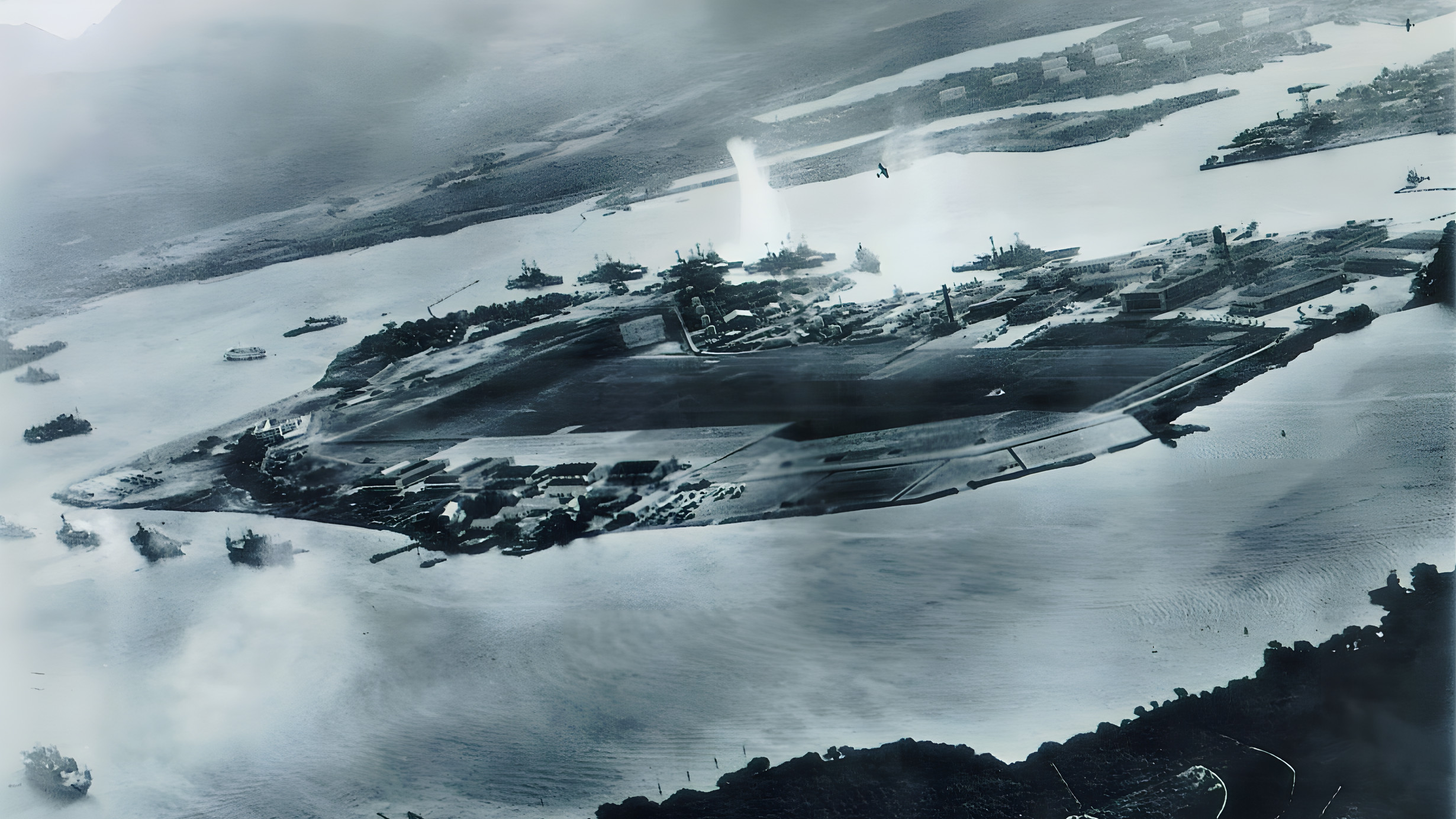
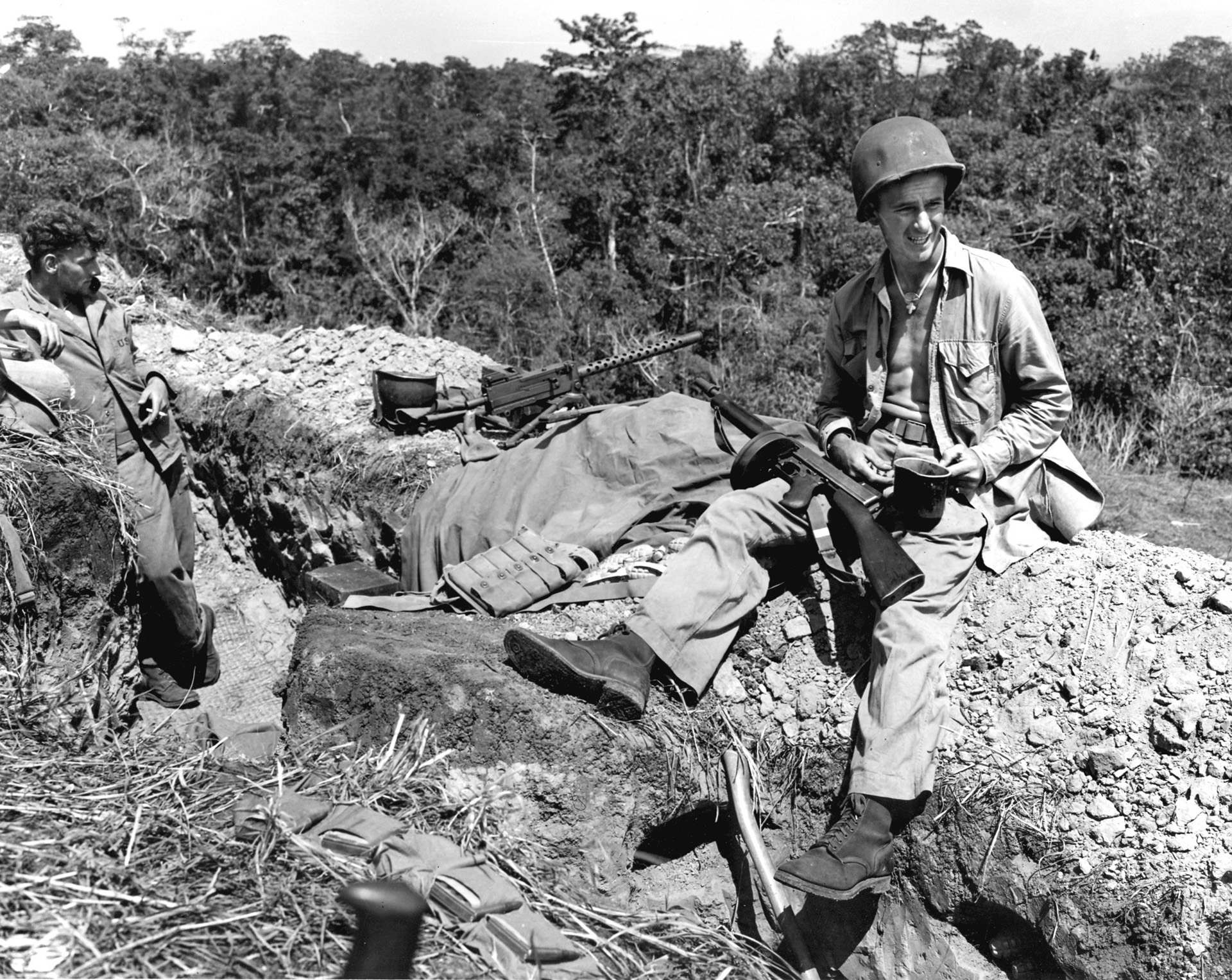
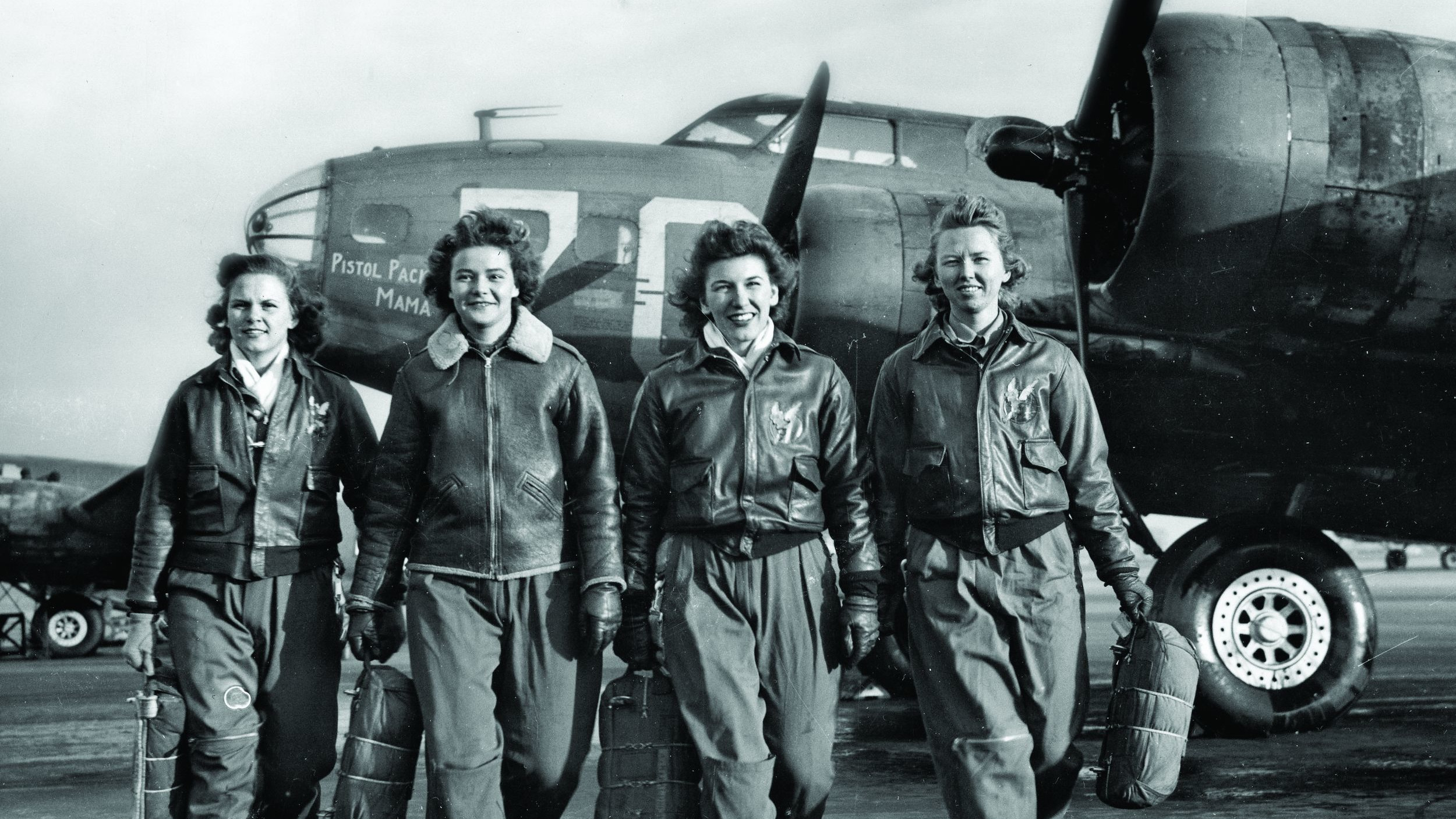
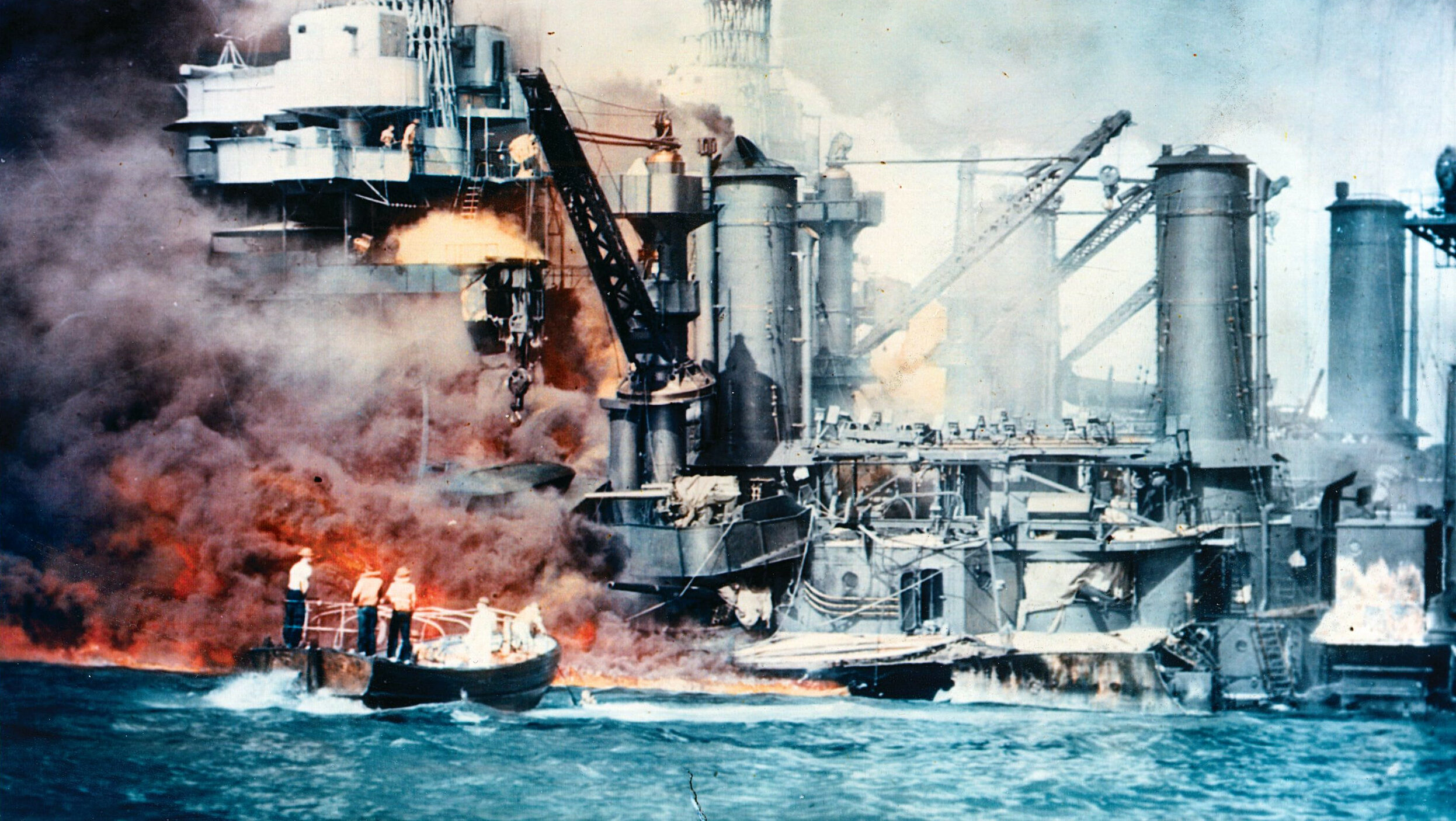
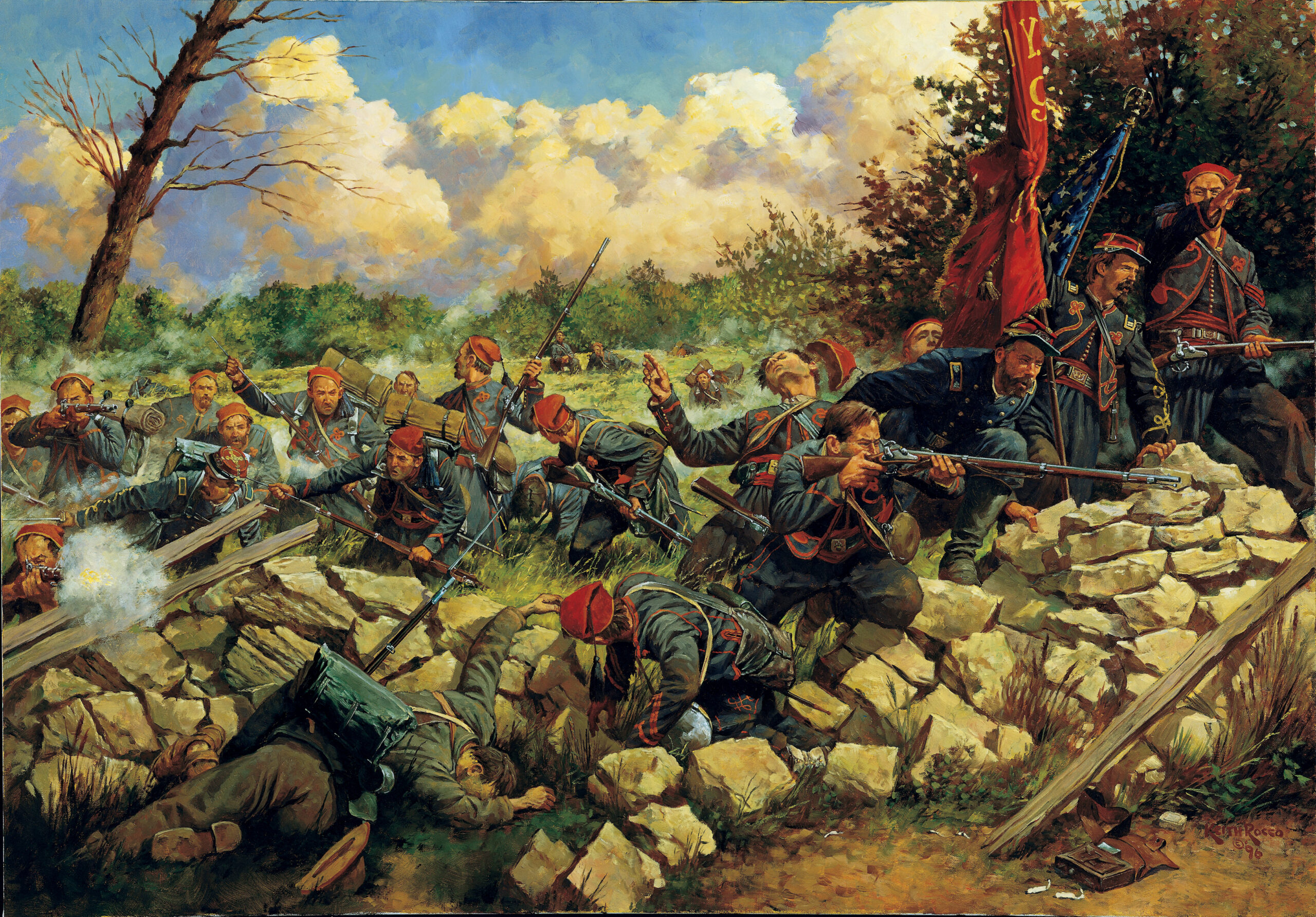
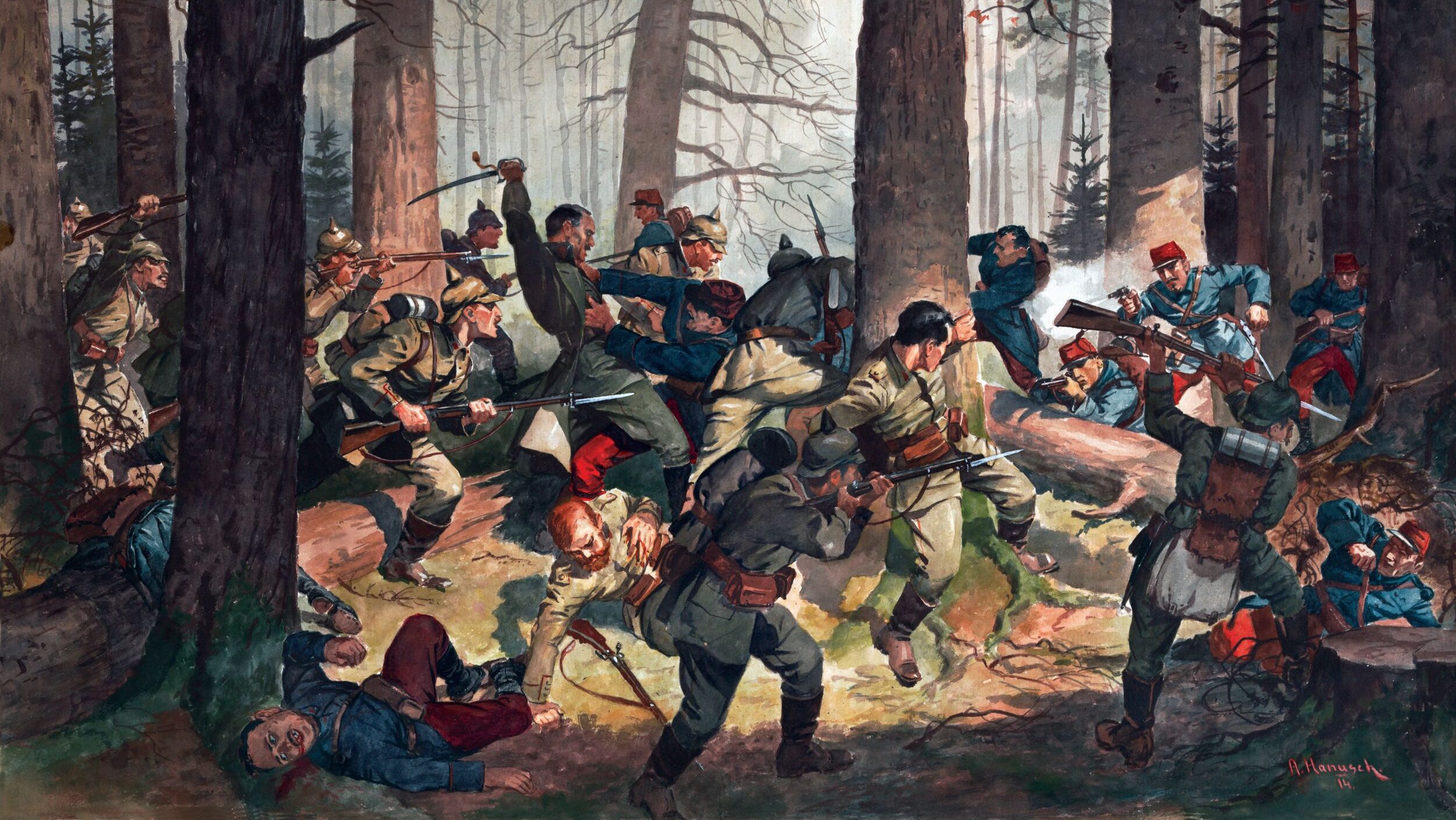
Just one comment. The U.S.N. flagship was the San Francisco, not the Florida. That was one of the nearby islands.
Thank you for the detailed account of this.